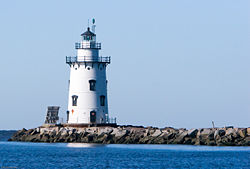 Old Saybrook is a town that is bounded not by one but by TWO major bodies of water, the Connecticut River and the Long Island Sound. That means that Old Saybrook takes its maritime location and history seriously, using them as the resources and the responsibilities that they are. Not surprising, then, that seniors’ WISE projects often revolve around the surrounding waterways.
Old Saybrook is a town that is bounded not by one but by TWO major bodies of water, the Connecticut River and the Long Island Sound. That means that Old Saybrook takes its maritime location and history seriously, using them as the resources and the responsibilities that they are. Not surprising, then, that seniors’ WISE projects often revolve around the surrounding waterways.
This past year was no exception, with two of the nine projects (six individual, two group projects) focusing on nautical themes. The group projects (consisting of two WISE students each) ranged from an art show and a project on Old Saybrook High School’s athletic history and sports banners to an examination of homelessness, with the creation of a “Cardboard Community”. Individual projects included two on novel writing, one on writing and producing an original CD, involvement with the after school program for young children at the local elementary school AND the two water-related projects, an investigation of an historical shipwreck in the Long Island Sound and the design and making of an actual submarine – yes, I said submarine.
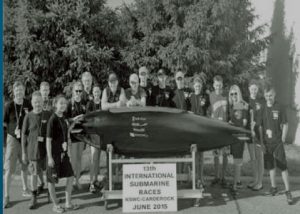 The Submarine Team It all started out with Old Saybrook’s Racing Submarine team. Not something you find in every high school. But then Old Saybrook isn’t just any high school….and happens to be in the very town where the first submarine ever (pace, Leonardo DaVinci), called the Turtle, was created and launched back in 1776, by Old Saybrook native David Bushnell. So even though the nation’s submarine capitol, Groton, is a 25-minute drive from the High School, submarines are in the town’s DNA. Especially since one-time East Haddam boat builder – and later Old Saybrook High School shop teacher – Fred Frese paired up with photographer Joe Leary to build a model of the Turtle in time for the bi-centennial celebration of 1976…and did so successfully.
The Submarine Team It all started out with Old Saybrook’s Racing Submarine team. Not something you find in every high school. But then Old Saybrook isn’t just any high school….and happens to be in the very town where the first submarine ever (pace, Leonardo DaVinci), called the Turtle, was created and launched back in 1776, by Old Saybrook native David Bushnell. So even though the nation’s submarine capitol, Groton, is a 25-minute drive from the High School, submarines are in the town’s DNA. Especially since one-time East Haddam boat builder – and later Old Saybrook High School shop teacher – Fred Frese paired up with photographer Joe Leary to build a model of the Turtle in time for the bi-centennial celebration of 1976…and did so successfully.
Building a Sub Fred Frese helped Old Saybrook High School students build their first submarine, powered like the Turtle by pedal gears, out of fiberglass, in 2009 and put it on display at the International Human-Powered Submarine Races in Bethesda, Maryland, a biennial eventwith teams invited, mostly from engineering colleges, from all over the world. After displaying their first sub, the OSHS team then built another one and entered it into the competition for 2011. They’ve been there ever since. In June of 2015, junior Peter Malinovsky, along with two other classmates, Peter Blank and Ryan Bergeron, was a member of that team and remembered the event vividly–the competition, the high powered security, the highs and the lows (quite literally) of it all. It was then that he and two other juniors decided to make submarine design, and construction, their senior project.
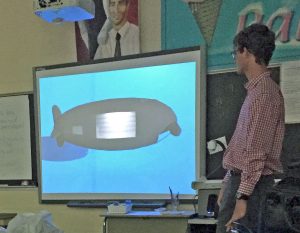
Peter and his sub
A New Design The old submarine, they decided, had been slowed down by its entirely fiberglass weight. Perhaps they could come up with a lighter design. And they wanted to find a way of charting their depth once within the submarine where it was impossible to know exactly where the submarine was. They hoped to not only design but actually build a new sub by late spring of 2016. Then there would just be the finishing touches, and practice runs, in time for the next round of submarine races in June of 2017.
As with so many projects, initial assumptions had to be toned down, but the bulk of what they proposed was completed, up to the filling of new molds for the new sub and the manufacture of the new circuit boards. Peter and his cohorts weren’t able to completely finish the project since they are now going off to college, but the submarine team and shop students remaining at Old Saybrook High School will finish the job, and both Peters and Ryan hope to return in time for the sub’s launch in the submarine races next spring.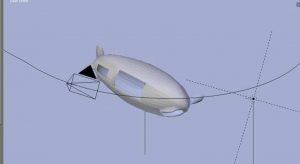
An Ingenious Design
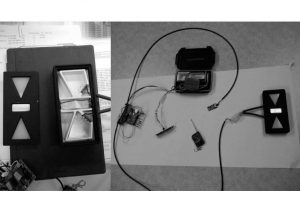
Circuit Board, completed
In his WISE presentation, Peter explained the entire process and his part in the project, mostly focused on the electrical circuitry required for the submarine. To solve the depth perception difficulty within the sub, Peter devised a depth signal light attached to sensors set for the proper depth, a light which would flash red when the sub was too low, green when it was too high and white when it was proceeding at the proper depth. With his interest in electrical engineering, this was a project that gave him invaluable hands-on experience in designing intricate and sophisticated circuitry and which also gave him the opportunity to work with a real engineering firm, Whelan Engineering and see his design go from concept to finished product.
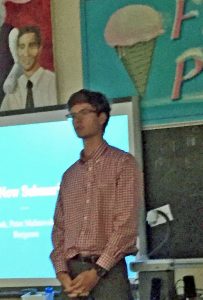
Peter Presenting
WISE Engenders Community Support He ended his presentation with heartfelt thanks for all the support – from WISE coordinator Gretchen Bushnell, from Fred Frese who even in retirement gave his time, wisdom and support to the budding submarine builders, from the OSHS Submarine Team, from the original submarine designer Alan Paige who consulted with them on and approved their design, from the local community and businesses like Whelan Engineering who took him in and got him started in his pursuit of electrical engineering, from his English teacher who mentored him along the way. This fall Peter is at Tufts, studying electrical engineering, but he has every intention of returning in time to take Old Saybrook’s new submarine back down to Maryland for its real test: the 2017 International Human-Powered Submarine Races. We’ll be rooting for Old Saybrook too!
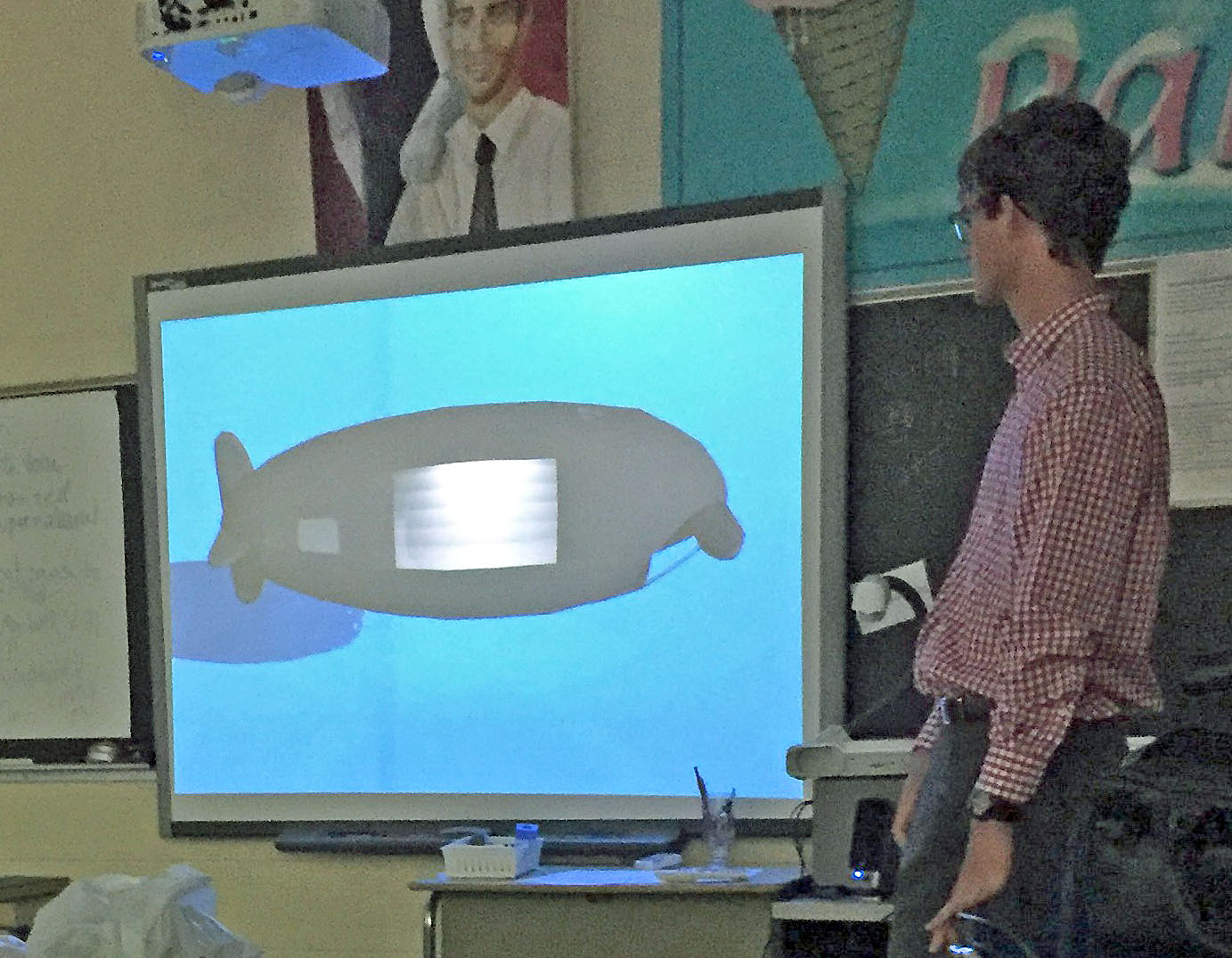
 Saving...
Saving...